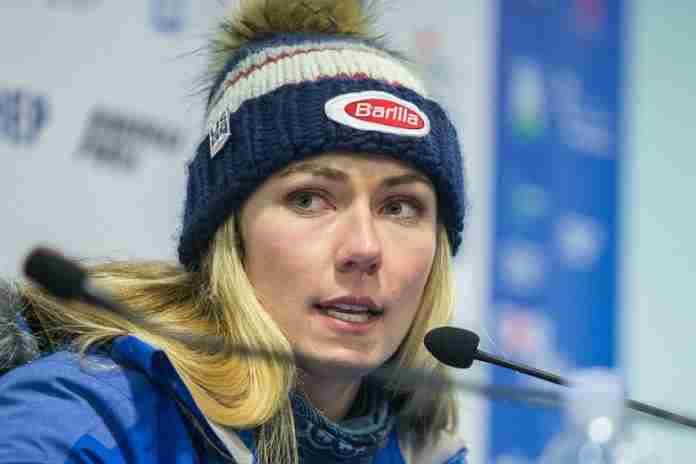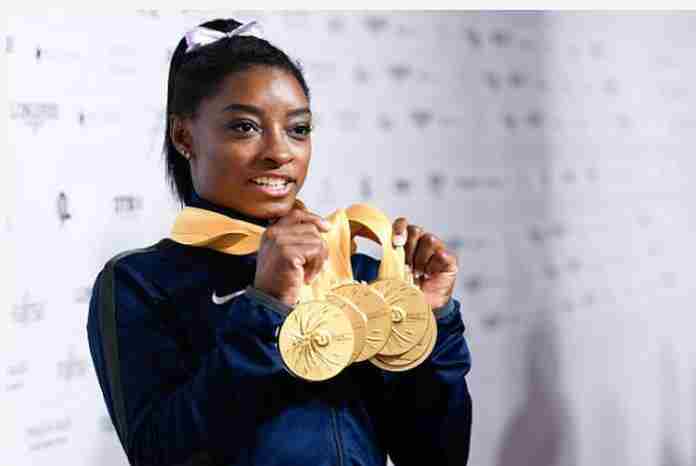Let there be no doubt, this was a wild year in Olympic sport, and as with so many areas today, full of contention, argument and disagreement. In some cases, these were coupled with the results of competition on the field of play.
As we count down the top stories of 2019 in international sport, our picks for nos. 10-6 are here and let’s count down the top five:
● 5. The IAAF rules on hyperandrogenism are upheld against Caster Semenya’s appeal ●
After its 2011 regulations on women with “differences in sex development” that banned competitors with high levels of testosterone was rejected by the Court of Arbitration for Sport, the International Association of Athletics Federations (IAAF) came with a narrowed set of rules in April 2018.
Normal female testosterone levels are from 0.06 to 1.68 nanomoles/liter, while normal male levels are from 7.7 to 29.4 nmol/L. The new regulations limit the level of testosterone for athletes entering women’s events from 400 m to the mile, to 5.0 nmol/L, or almost three times the level ordinarily found in women. Women with too-high testosterone levels can lower them with oral contraceptives.
The new rules were challenged by South Africa’s double Olympic 800 m champion Caster Semenya at the Court of Arbitration for Sport, but the Court decided in April that while discriminatory on their face, the regulations were sufficiently “necessary, reasonable and proportionate to preserve the integrity of female athletics (‘protected class women’) in the restricted events as well as to ensure fair competition.”
Semenya appealed to the Swiss Federal Tribunal, which initially struck down the IAAF’s regulations in May, but on 29 July issued an order reinstating the regulations, noting that “in a first summary examination, that Caster Semenya’s appeal does not appear with high probability to be well founded.” The final decision on the appeal has still not been issued, but is expected eventually.
With the new rules in place and as Semenya has stated that she will not be taking any medications to lower her naturally-high testosterone levels, she did not compete in the World Championships in Doha, Qatar and – if the regulations stand – would not be eligible to run in the 2020 Olympic Games in Tokyo in the 800 or 1,500 m. She could run in events longer than the mile, but has not indicated that she will do so.
The IAAF (now World Athletics) moved on quickly, and hosted an October meeting in Lausanne, Switzerland to apply the same limitations to transgender athletes, attended by the international federations for golf, rowing and tennis, as well as the International Paralympic Committee, with the aim to spread these rules more widely across sports. This is only the start of the discussion on transgenders and will continue in 2020, but was a major win for the IAAF.
● 4. International Swimming League challenges FINA and hosts its inaugural season ●
Founded and funded by Ukrainian energy billionaire Konstantin Grigorishin, the International Swimming League promised to “revolutionize” the sport by creating a new professional league, with eight teams competing across seven meets between October and December.
A lot of the sport’s top athletes signed up, such as superstars Caeleb Dressel, Katie Ledecky, Adam Peaty (GBR), Sarah Sjostrom (SWE), Chad le Clos (RSA), Katinka Hosszu (HUN), Daiya Seto (JPN) and many more and the seven meets were indeed held, with the final at the Mandalay Bay Events Center in Las Vegas, Nevada.
But the meets were modestly attended, with the best turnouts in Europe and very little attention in the U.S., even though four of the seven meets were held there. The meets were produced with television in mind, had a live disc jockey on the deck and lots of graphics to eliminate any shots of the (small) crowds.
Despite repeated shouts by the announcers that the times did not matter, most of the attention that was paid to the ISL events was from the three world Short Course records set in the men’s 50 m Free (20.24, Dressel), 400 m Medley (3:54.81, Seto) and the women’s 100 m Backstroke (54.89, Minna Atherton (AUS)).
Grigorishin promised that the league would expand to 10 teams – adding Toronto and Tokyo – in 2020-21 and host 27 meets from October to April. But the first-year program drew no visible commercial sponsors and had broadcast exposure that was almost all online. And while the project was a sure financial loser in year one, the proposed, expanded program would cost many times that in year two. Will it happen? Probably only if Grigorishin pays for it.
ISL had more success pressuring FINA to cooperate with it. After a trial meet in December 2018 was canceled, ISL filed suit against FINA in U.S. District Court in Northern California as operating a monopoly in professional swimming, and got Hosszu and U.S. swimmers Tom Shields and Michael Andrew to front a class-action suit on the same basis. That action has survived a dismissal attempt by FINA and will be heard in mid-2020.
More impactful was a January announcement from FINA that it would not prevent the holding of meets by ISL and would not sanction any athlete for participating in such a program. Moreover, FINA felt pressured into creating its own “Champions Swim Series” which included three meets and $3.1 million in prize money in 2019 and is scheduled for two meets (in January) and $2.3 million in athlete compensation in 2020.
So, ISL can claim some significant accomplishments in year one, even its own meets didn’t make much of a splash. But how much money Grigorishin will put in for 2020 will be a story to watch.
● 3. A hot and wild IAAF World Championships in Doha leads to change in Tokyo for 2020 ●
The IAAF World Championships in Doha, Qatar, was one of the most talked-about events during the year. Held in late September and early October because of the high heat in the Middle East, the training schedules of athletes were significantly impacted, and there was concern over a whole range of issues, from athlete safety to attendance.
The Qatari organizers made a major effort to ameliorate the heat issues inside the Khalifa International Stadium, creating reasonable – if somewhat warm – conditions. The partial roof over the stadium and the heavy air conditioning flow created a situation that almost resembled running indoors. The results, therefore, were sensational, with three world records and six World Championships meet records, including two world marks in the Mixed 4×400 m relay by the United States teams, and a world 400 m hurdles record (52.16) by Dalilah Muhammad of the U.S. At least 86 national records were set during the competition.
The U.S. dominated the medal table once again, winning 29 medals (14-11-4) to 12 for Jamaica (3-5-4) and 11 for Kenya (5-2-4).
One of the major shortfalls of the event was the very low attendance in the first several days of the event. In part this was due to the economic sanctions against Qatar imposed by other Arab nations for political reasons, having nothing to do with the meet. Schools were asked to bring children and the crowds came out late in the meet to see national hero Mutaz Essa Barshim win the men’s high jump and then for the final weekend, featuring the relays.
But the legacy of this event came in the long-distance events, especially the two marathons, both held at midnight to try and escape the high heat. The women’s race took place on the first day, with temperatures ranging from 86-92 F and only 40 of the 68 entrants were able to finish. The men’s race, held on the next-to-last day, had 55 finishers out of 73 starters.
Despite heavy preparations for medical assistance, a 7 km loop course which allowed for extra water stations and athlete monitoring and extensive pre-race instructions to athletes, the sight of so many world-class athletes dropping out from the conditions caused alarm at the International Olympic Committee.
Facing a severe heat scare in Tokyo during the summer and early fall in which athletes at some of the test events were impacted, the IOC moved the 2020 Olympic marathons and racewalking events out of Tokyo and to the northern city of Sapporo in Japan, site of the 1972 Olympic Winter Games. This was protested by the Tokyo Metropolitan Government, but to no avail, with the IOC stating it would pick up the marginal additional costs of holding the events in Sapporo. There were athletes who were angry as well, but it was a reminder to future organizers that the IOC does, in fact, own the Olympic Games.
● 2. U.S. Women’s World Cup win changes soccer, and Simone Biles makes gymnastics history ●
The case can be made that 2019 was very much the Year of the Woman, in many areas. One of the most memorable moments came in June, with the FIFA Women’s World Cup tournament held in France.
This event set new standards for worldwide interest in the women’s game, with FIFA announcing that 1.12 billion viewers had watched at least some of the tournament, and 263.6 million watching some part of the final. In addition, attendance was 1.13 million (not a record) and interest was swelled by the outstanding performance of European teams, which accounted for half of the Round-of-16 teams and seven of the eight quarterfinalists. The U.S. won the tournament – its fourth title – by surviving strong challenges from Spain (2-1) in the Round of 16 and England (2-1) in the semis; the American women won the final, 2-0, over The Netherlands.
The tournament was so successful that FIFA, in addition to pouring in more money into the development of the women’s game worldwide, is now considering whether to hold the Women’s World Cup every other year. Four bidders have come through for an expanded Women’s World Cup (32 teams) in 2023.
That victory came against the backdrop of a class-action suit by 28 members of the U.S. Women’s National Team against the U.S. Soccer Federation, charging discrimination in pay and playing conditions vs. the Men’s National Team. An attempt at mediation failed and the suit is scheduled to go to trial in May of 2020, a couple of months prior to the 2020 Olympic Games.
If this was the Year of the Woman in international sports, then the Woman of the Year was American gymnast Simone Biles. Already an icon in the sport as well as an abuse survivor, she re-wrote the sport’s record book in 2019 with her performance at the World Artistic Gymnastics Championships.
Still just 22, Biles – who stands 4-8 – stood tallest at the FIG World Artistic Gymnastics Championships in Stuttgart, Germany, winning the All-Around, Vault, Balance Beam and Floor Exercise, in addition to the Team gold. Those five victories gave her a career total of 25 Worlds medals, the most ever won by anyone (man or woman) and increased her record total of gold medals to 19. Her five golds at a single Worlds tied the record and was done for the first time since 1958.
She is, by far, the greatest female gymnast in history and is considered in some circles as the finest gymnast ever. She will be the favorite for another five golds at the 2020 Games in Tokyo.
● 1. The unending saga of Russia and doping ●
Will this ever end?
There are a lot of folks who just roll their eyes when you mention Russia and doping, as this soap opera is now headed for its sixth year in the Olympic spotlight. From January through December, this saga has confused, confounded and clouded the world of international sport.
The year started well enough, with the World Anti-Doping Agency finally able to obtain a copy of the Moscow Laboratory database from Russian authorities in January, one of the requirements for Russia to maintain its compliant status. The scope of the data was enormous and required a lengthy review by the WADA staff to determine its validity.
In September, WADA announced that there were substantial “inconsistencies” in the data and sent questions to the Russians – with a three-week deadline – to answer concerning possible tampering with the data. When the answers came back, the WADA Investigations and Intelligence team put together a detailed report for the Compliance Review Committee, which could then make recommendations on whether the Russian Anti-Doping Agency should continue to be considered compliant.
Nope.
The Compliance Review Committee not only agreed with the WADA staff that thousands of changes had been made to the data provided in January, but suggested a long list of sanctions on 21 November. These included a declaration that Russia would be considered non-compliant for a period of four years and would not be able to compete under the Russian flag for that period in major events including the Olympic Games, Paralympic Games and world championships. The only opening was if a Russian athlete can prove – under circumstances yet to be specified – that he or she was personally drug-free and not implicated in any of the data available to WADA as being involved in the state-sponsored doping system from 2011-15.
There were shrieks of favoritism from those demanding a blanket ban, but the sanctions – which were approved by the WADA Executive Board on 9 December – were specifically developed to withstand a certain court challenge from Russia.
After the sanctions were approved by WADA on 9 December, the Russians confirmed their appeal to the Court of Arbitration for Sport on 27 December.
Now the matter is in the CAS system and the Russians have already announced that its interests will be represented by separate sets of attorneys for the Russian Anti-Doping Agency and the Russian Olympic Committee. The likely strategy is to slow the process down as much as possible and drag it past the 2020 Olympic Games in Tokyo, allowing Russia to compete as an invited nation.
That won’t work in track & field, as World Athletics has halted its procedure which allowed Russians to compete as neutral athletes, and could expel Russia from the federation altogether.
WADA’s head of the Compliance Review Committee, British attorney Jonathan Taylor, made it clear that if Russia is able to delay the CAS decision past Tokyo, the four-year period will simply start later – if upheld – and keep Russia out of the 2024 Games in Paris.
This is far from being over, but it was – and is – the top story in international sport for 2019.
There was another important doping development which was a major bombshell this year, involving Alberto Salazar, the high-profile coach of the Nike Oregon Project, and Dr. Jeffrey Brown, a physician associated with the club. An American Arbitration Association panel upheld a four-year sanction against both on 30 September; the U.S. Anti-Doping Agency had determined that “each should receive a 4-year sanction for orchestrating and facilitating prohibited doping conduct.”
Salazar immediately filed notice of appeal to CAS, but Nike chief Mark Parker announced 10 days later that the Nike Oregon Project program was being shut down. While USADA noted that none of the Nike Oregon Project athletes had been part of any doping violations, both the International Olympic Committee and WADA asked for a review of the status of all of the athletes involved in the program, including Olympic and World Championships stars Mo Farah (GBR), Galen Rupp (USA), Sifan Hassan (NED) and others. It’s another story that won’t be closed up until sometime in 2020.
Quite a year, wasn’t it?
And 2020 will be even wilder, with the long-awaited, $12.6 billion Tokyo Games coming in July, and even more off-the-field intrigue coming soon. We’ll have our picks for the top stories to look for in 2020 starting on Thursday; in the meantime, best wishes for a healthy and happy new year!
Rich Perelman
Editor
You can receive our exclusive TSX Report by e-mail by clicking here. You can also refer a friend by clicking here.


























